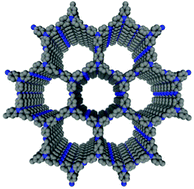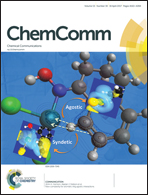A backbone design principle for covalent organic frameworks: the impact of weakly interacting units on CO2 adsorption†
Abstract
Covalent organic frameworks are designed to have backbones with different yet discrete contents of triarylamine units that interact weakly with CO2. Adsorption experiments indicate that the triarylamine units dominate the CO2 adsorption process and the CO2 uptake increases monotonically with the triarylamine content. These profound collective effects reveal a principle for designing backbones targeting for CO2 capture and separation.

- This article is part of the themed collection: Most downloaded articles of 2017: Inorganic and Materials Chemistry


 Please wait while we load your content...
Please wait while we load your content...